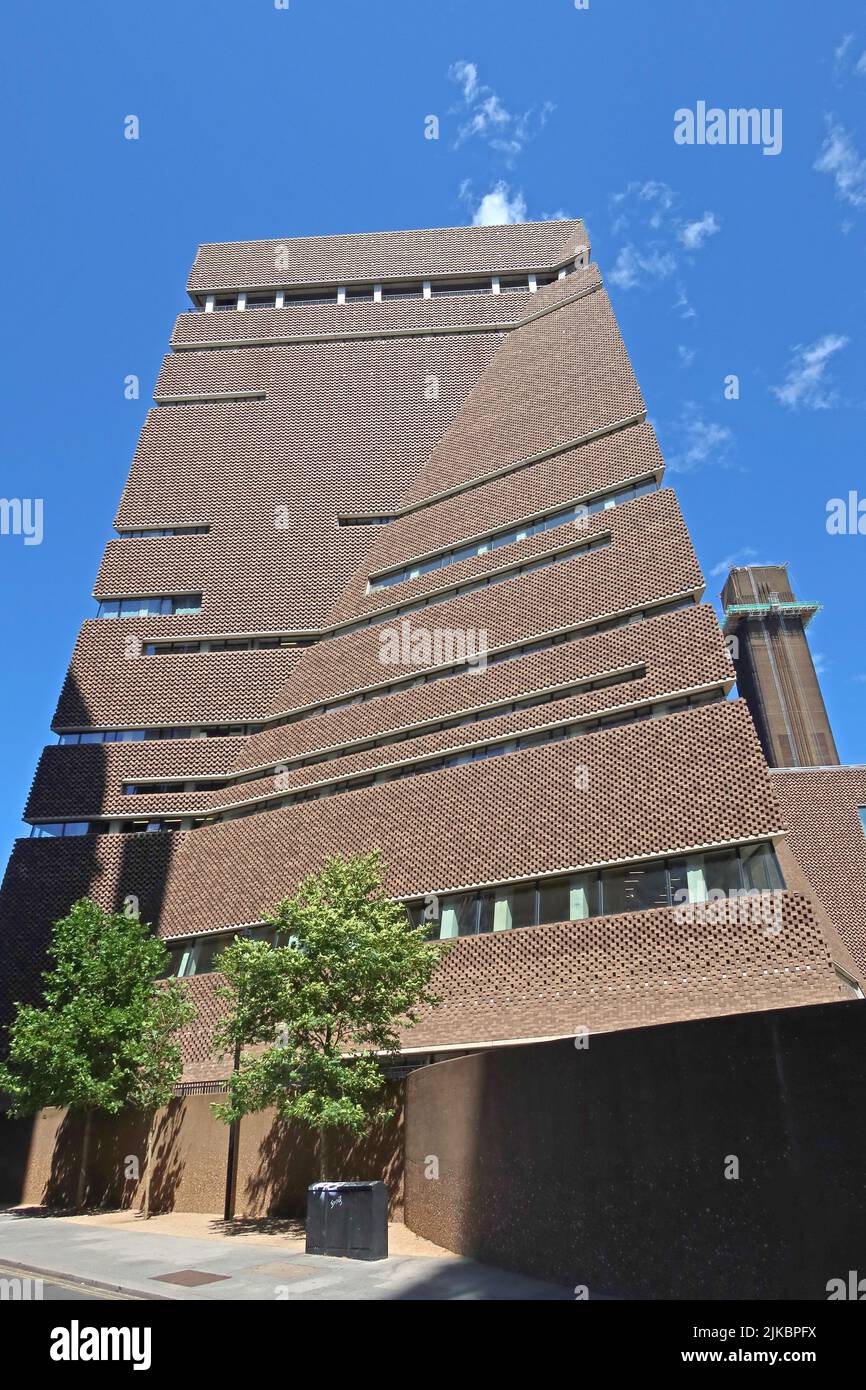The Blavatnik Building, architects Herzog & de Meuron, Tate Modern, Bankside, London, England, UK, SE1 9TG

Image details
Contributor:
Tony Smith / Alamy Stock PhotoImage ID:
2JKBPFXFile size:
57.1 MB (3.2 MB Compressed download)Releases:
Model - no | Property - noDo I need a release?Dimensions:
3648 x 5472 px | 30.9 x 46.3 cm | 12.2 x 18.2 inches | 300dpiDate taken:
24 July 2022Location:
Bankside, London, England, UK, SE1 9TGMore information:
With the Switch House sharing its foundations with the existing Turbine Hall and the new building’s tower oversailing the Switch House, settlement was a key consideration for the Ramboll ground engineering team, especially with the Turbine Hall glass roof. Movement posed a critical issue and was a key driver in the development of the new building’s foundation design. Challenging geometry This unique building has one-of-a-kind geometry and a remarkable brick façade. Every facet of the building’s design has had to be planned and coordinated with the most staggering precision. Its unique and complex geometry impacted many aspects of the building, including the brick arrangement, windows and precast façade panels, internal structure, scaffold. A concrete frame emerges from the concrete underworld The concrete frame to the tower emerges out of the concrete underworld in the form of a faceted pyramid. Deep transfer beams facilitate a change in geometry and provide a base for the tower structure to ascend. Carefully coordinated with the remaining basement structure of the oil stores, it establishes a relationship with the raw character of the existing industrial heritage. Ramboll's passion for design is seen throughout this building, with countless numbers of concrete options explored for the exposed areas, to be sure of the best end result. The final concrete solution specified was 40% GGBS; a grade which not only ensures a light and smooth finish with sharp edges, but also has lower CO2, resulting in a lower carbon footprint concrete. A structural design that embraces the building’s multifaceted needs The continuous precast perimeter columns crank to form the ‘creases’ in the envelope of the building. Containing a core of structural steel at critical locations to provide slenderness, the precast perimeter columns are cruciform in profile, with ‘arms’ to support the precast cladding panels, glazing and brickwork.